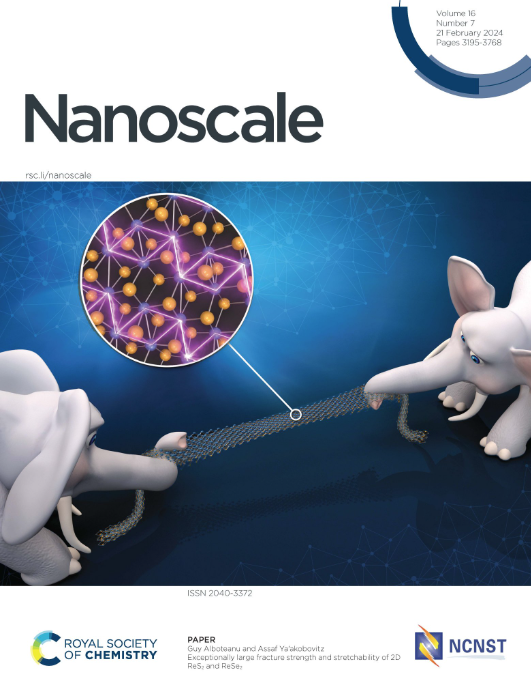固定电荷法和固定电位法在钼上高效CO2电还原的比较研究
IF 5.8
3区 材料科学
Q1 CHEMISTRY, MULTIDISCIPLINARY
引用次数: 0
摘要
将可再生能源电化学转化为燃料和化学品解决了能源危机和环境污染问题。目前,CO2还原反应催化剂存在过电位高、选择性差等问题。金属烯具有结构优势和丰富的活性位点,具有较高的性能。钼烯在氮还原反应电催化方面表现优异。本文采用无溶剂效应和有溶剂效应的固定电荷法(FCM)和固定电位法(FPM)三种方法对CO2RR中的钼烯进行了评价。由于其表面剩余的电子,这种材料固有地捕获和激活二氧化碳,表现出高活性和选择性,有利于CH4的产生。最优路径为*CO2→*OCHO→*OCH2O→*OCH2O→*OCH2→*OCH3→*O→*OH→*H2O,其过电位较低(0.68 V),低于Cu(211)。尽管具有溶剂效应的FCM和FPM的过电位相同,但改变电位决定步长强调恒定电位条件。这些发现强调了这种新兴材料作为高效CO2RR电催化剂的潜力,拓宽了其应用前景,鼓励了进一步的理论和实践探索。本文章由计算机程序翻译,如有差异,请以英文原文为准。
High-Efficiency CO2 Electroreduction on Molybdenene: A Comparative Study Using Fixed-Charge and Fixed-Potential Methods
The electrochemical conversion of renewable energy into fuels and chemicals addresses the energy crisis and environmental pollution. Current CO2 reduction reaction (CO2RR) catalysts face challenges like high overpotentials and poor selectivity. Metallenes, with structural advantages and abundant active sites, offer high performance. Notably, molybdenene has excelled in nitrogen reduction reaction electrocatalysis. Herein, employing three methods, the fixed-charge method (FCM) without and with solvent effect and the fixed-potential method (FPM), to evaluate molybdenene for CO2RR. This material inherently captures and activates CO2 due to its surplus surface electrons, demonstrating high activity and selectivity, favoring CH4 production. The optimal pathway, *CO2 → *OCHO → *OCH2O → *OCH2OH → *OCH2 → *OCH3 → *O → *OH → *H2O, exhibits low overpotentials (0.68 V), lower than Cu(211). Despite identical overpotentials from FCM with solvent effect and FPM, varying the potential-determining step emphasizes constant potential conditions. These findings underscore potential of this emerging materials as a high-efficiency CO2RR electrocatalyst, broadening its application prospects and encouraging further theoretical and practical exploration.
求助全文
通过发布文献求助,成功后即可免费获取论文全文。
去求助
来源期刊

Nanoscale
CHEMISTRY, MULTIDISCIPLINARY-NANOSCIENCE & NANOTECHNOLOGY
CiteScore
12.10
自引率
3.00%
发文量
1628
审稿时长
1.6 months
期刊介绍:
Nanoscale is a high-impact international journal, publishing high-quality research across nanoscience and nanotechnology. Nanoscale publishes a full mix of research articles on experimental and theoretical work, including reviews, communications, and full papers.Highly interdisciplinary, this journal appeals to scientists, researchers and professionals interested in nanoscience and nanotechnology, quantum materials and quantum technology, including the areas of physics, chemistry, biology, medicine, materials, energy/environment, information technology, detection science, healthcare and drug discovery, and electronics.
 求助内容:
求助内容: 应助结果提醒方式:
应助结果提醒方式:


